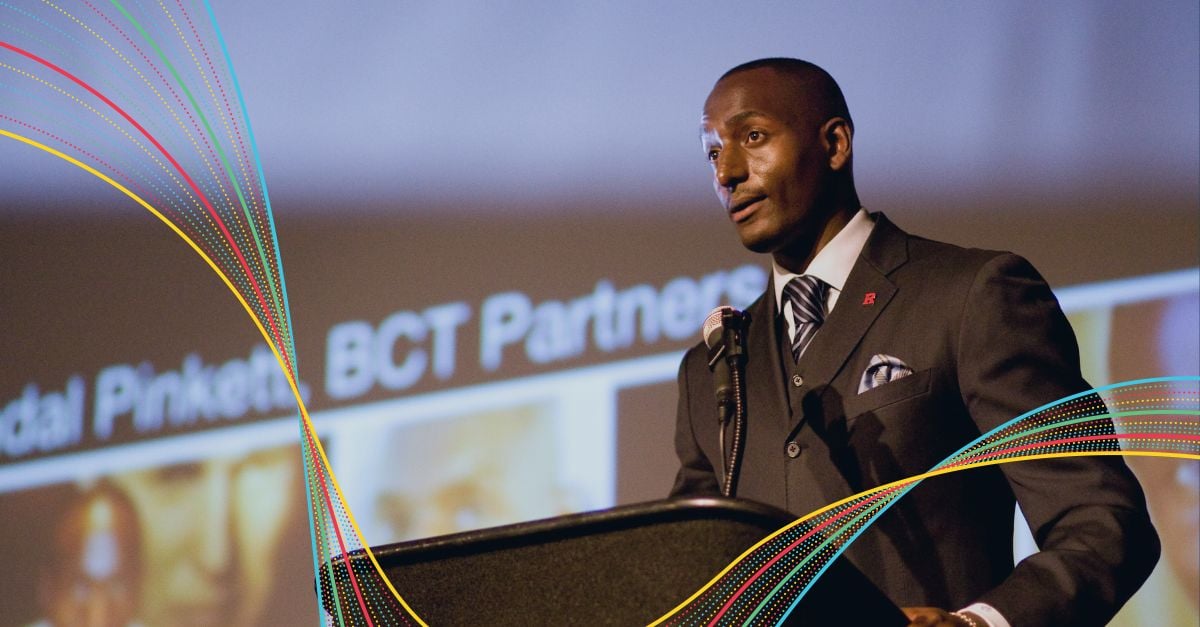Corporations worldwide are embracing diversity, equity, and inclusion (DEI) through changes to their culture, hiring and promotion practices, and other actions. Making this shift requires training and tough conversations with employees. But getting started can be challenging. Many people feel uncomfortable, even threatened, by the prospects of DEI-related conversations, and they resist these efforts. But without active participation by employees, DEI efforts can’t progress.
Few people know this dilemma better than Dr. Randal Pinkett, the co-founder, chairman, CEO, and managing partner of BCT Partners. Pinkett has over 20 years of experience helping executives implement DEI initiatives inside their organizations. He is the author of "Data-Driven DEI: The Tools and Metrics You Need to Measure, Analyze, and Improve Diversity, Equity, and Inclusion". One of the keys to his success is his embrace of cognitive diversity through the Whole Brain® Thinking framework and Herrmann Brain Dominance Instrument®.
Learn more about why Pinkett is such an enthusiastic proponent of Whole Brain® Thinking not only in his work but also for other people and organizations.
Helping People Overcome Their Apprehensions
To create progress on DEI, workplaces must embrace candid and honest conversations. But it’s that very openness that can cause discomfort for individuals. “People can tend to get very defensive and fearful when you talk about race and gender and ethnicity and age and the like,” Pinkett says.
This roadblock is something Pinkett frequently sees at the very beginning of his engagements with organizations through his company, BCT Partners. To be able to get into his core DEI work, he needs a way to ease this discomfort and get people’s buy-in. This is where cognitive diversity and the Whole Brain® Thinking model come into play.
“At BCT, we've seen organizations achieve tremendous results across a multitude of industries. We've seen the Cleveland Cavaliers in professional sports. We've seen Altera (acquired by Intel) in the technology industry. We've seen University of California Davis in higher education, Bristol Myers Squibb in life sciences, as well as Virtua Health, Cincinnati Children's Hospital, and MetroHealth in the healthcare industry,” Pinkett says. “Quite frankly, I haven't seen an industry that could not benefit. From a data-driven approach to DEI and embracing whole brain thinking, small, medium, large, corporate, nonprofit, public charitable, across the entire board.”
Cognitive diversity explains how individuals think, process information, and make decisions. Cognitive diversity is shaped by people’s backgrounds, experiences, knowledge, and cognitive style. And it’s often a concept people feel safer with than jumping right into race, gender, or other characteristics.
“When you come into the conversation talking about cognitive diversity and thinking preferences, they're like, what? You're not talking about identifiers. No, we're not,” Pinkett says. “To begin the conversation, talking about Whole Brain® Thinking and cognitive diversity and diversity of thought, I found it to be an excellent entry point to dialogues around DEI.”
Pinkett likes that the Whole Brain® Thinking framework is simple to explain but complex enough to be useful.
“It's so intuitively easy to understand when you think about how your brain operates and how to map that to one's preferences and how the quadrants produce these insights,” Pinkett says. “But then the complexity can go as deep as you want. You can get into communication, team-building, how you relate to people, and how you can expand your repertoire of leadership.”`
Raising Bias Awareness in Hiring
One of Pinkett’s clients, Altera (acquired by Intel), needed to overhaul its recruiting and hiring processes. Key to this effort was hiring managers becoming more aware of their biases and how Whole Brain® Thinking could help them change their mindsets. This framework created alignment for Altera employees and helped them feel comfortable reexamining organizational norms.
“Whole Brain® Thinking and Whole Brain® language became a part of their common language,” Pinkett says. “So the colors, the preferences became a part of the organization's culture. Their sales team saw an increase in new hires with improved retention rates and a Whole Brain® Thinking decrease in terminations.
Sign up to our newsletter for the latest insights
Cultivating a Deeper Understanding of Preferences
One of the reasons Pinkett finds Whole Brain® Thinking so valuable is its concept of thinking preferences. People aren’t hardwired to only one or two of the Whole Brain® quadrants, and their preferences aren’t necessarily the same as their competencies. This way of thinking is a big mindset shift for many people — and by taking that leap, Pinkett primes them for deeper conversations around DEI.
“When I think about data-driven DEI, as it relates to people, there are two things any person should know along their journey: preferences and competencies,” Pinkett says. “What are the things that you are naturally inclined to do or naturally lean into doing or require little energy? Those are your preferences.”
Pinkett uses preferences to help people understand more about themselves, how they think, and how they can improve. “I can think of no better tool than Whole Brain® Thinking to give people insight into their preferences because, by knowing my preferences, I can now mitigate my blindspots, and I can stretch and expand into areas I may not naturally be inclined to stretch or expand into,” he says.
Whole Brain® Thinking also offers a neutral ground for all parties to align on, removing some of the discomforts that people might feel when discussing other characteristics and traits.
“Whole Brain® Thinking gets to the core of our brains. Our brains know no nationality,” Pinkett says. “Our brains know no regions. They know no ethnicity or gender or the like. And understanding our cognitive preferences can be a wonderful beginning and stepping stone to how we can better understand ourselves and better relate to one another in a global context.”
For DEI leaders who are looking for new ways to break down barriers, engage people on DEI, and make lasting improvements inside organizations, Pinkett advocates adding Whole Brain® Thinking to your tool kit.
“Whole Brain® Thinking and HBDI® enable you to get valuable data on what people's preferences are,” Pinkett says. “We know that a preference can lead to a blindspot. Part of what we do in the work of DEI is help people to see their preferences, to recognize their blindspots, and to then mitigate those blindspots. This is an incredible tool to use in that endeavor.”
Learn more about Pinkett’s Whole Brain® Thinking journey.












